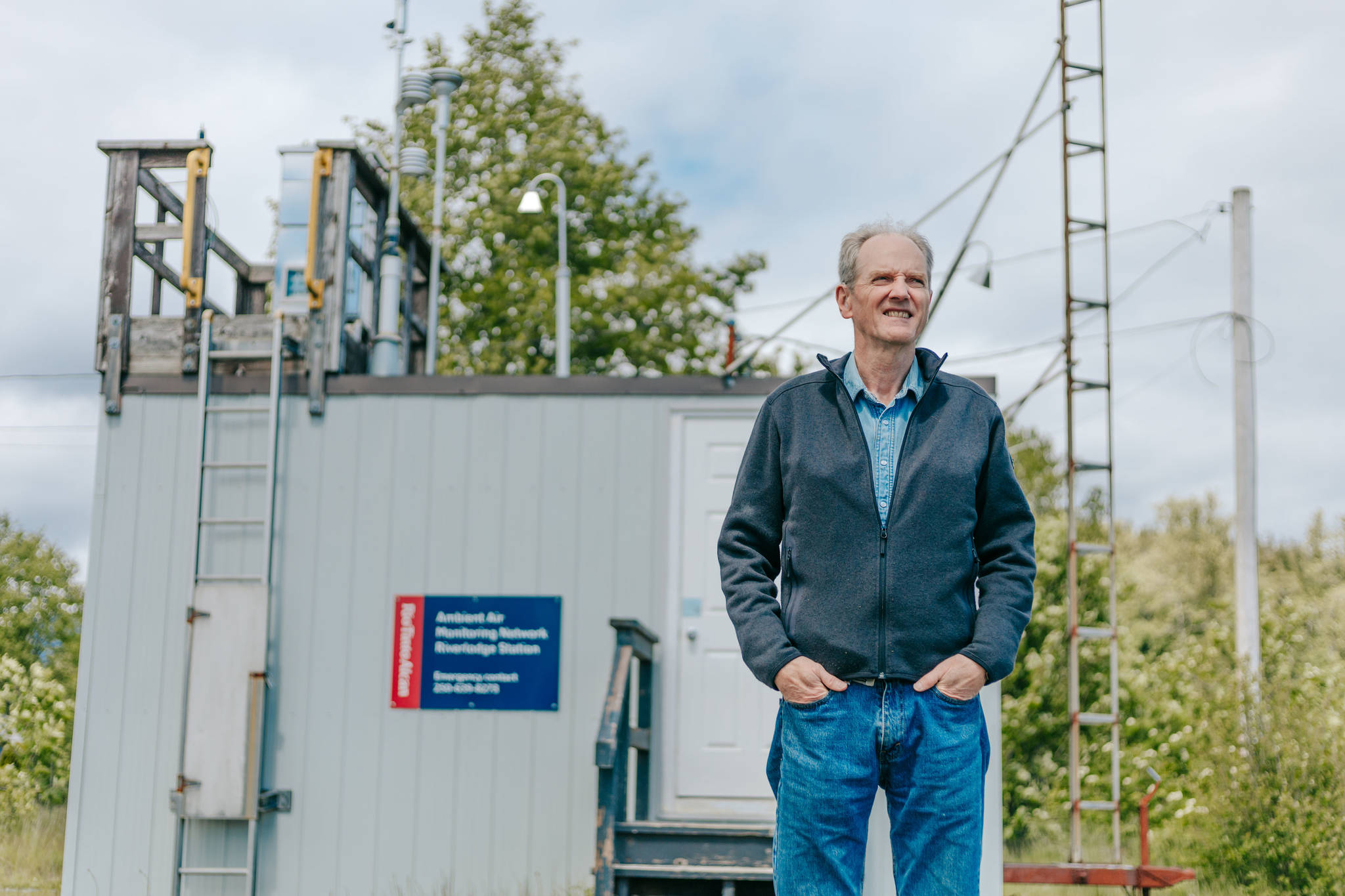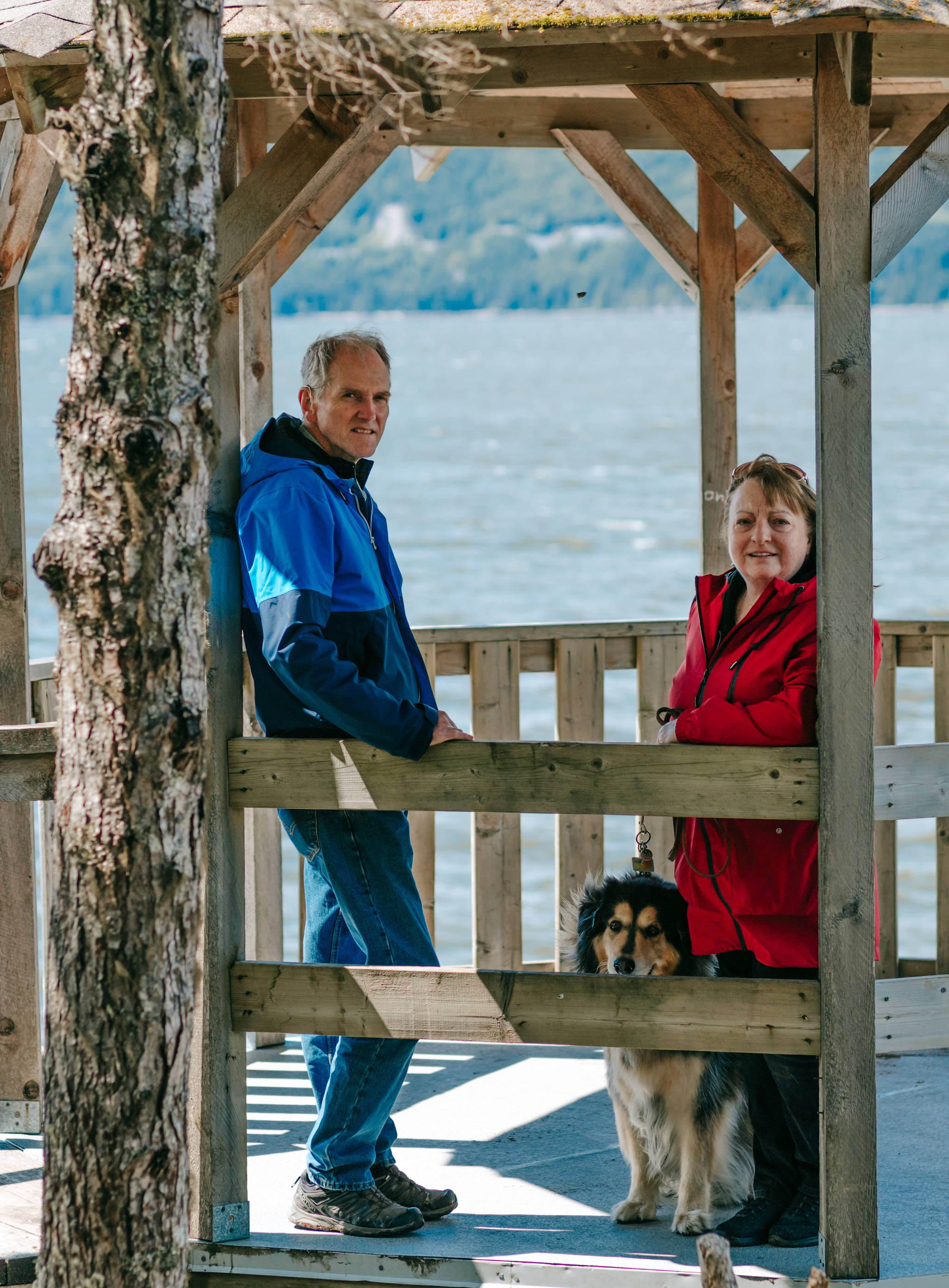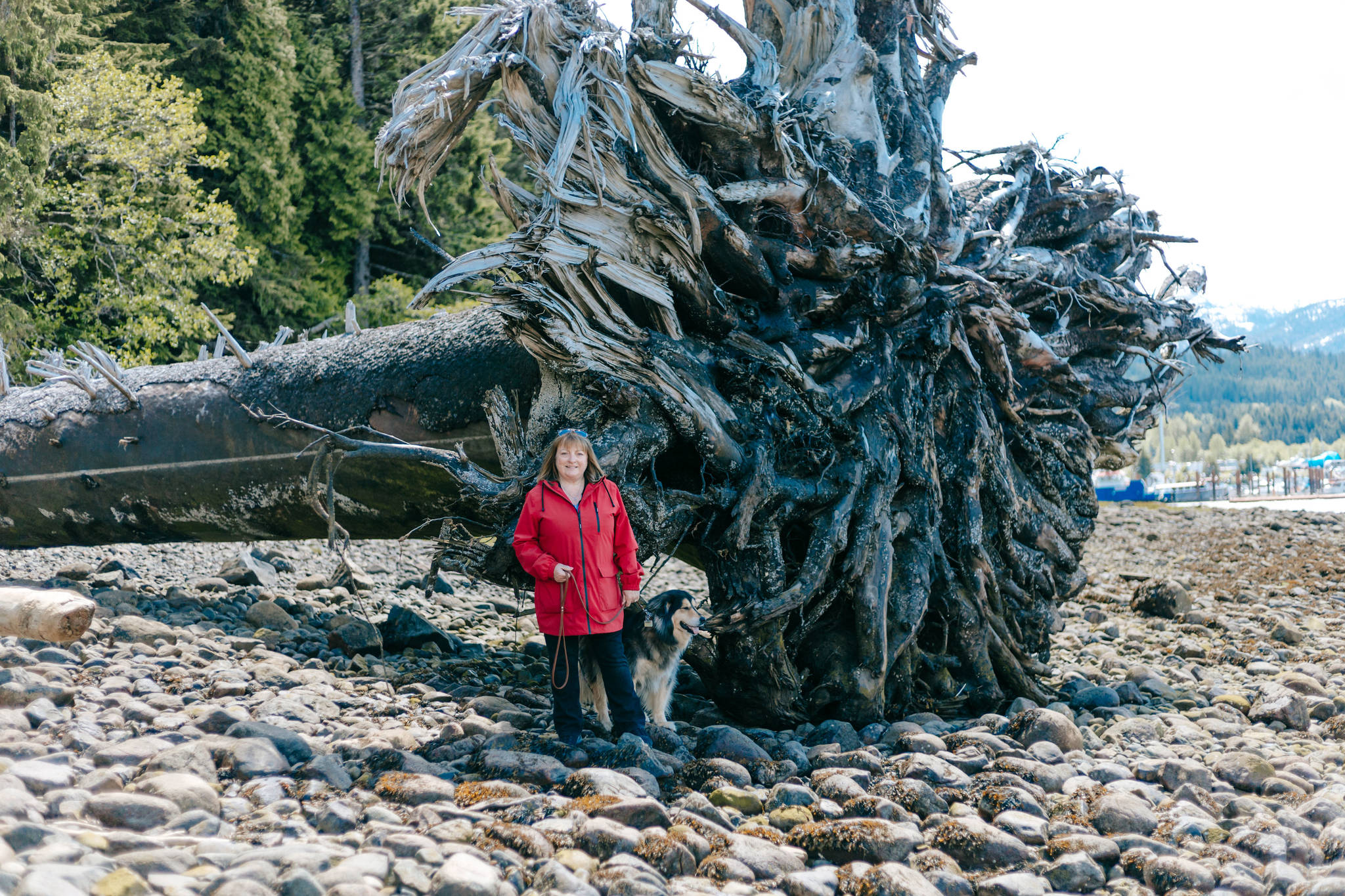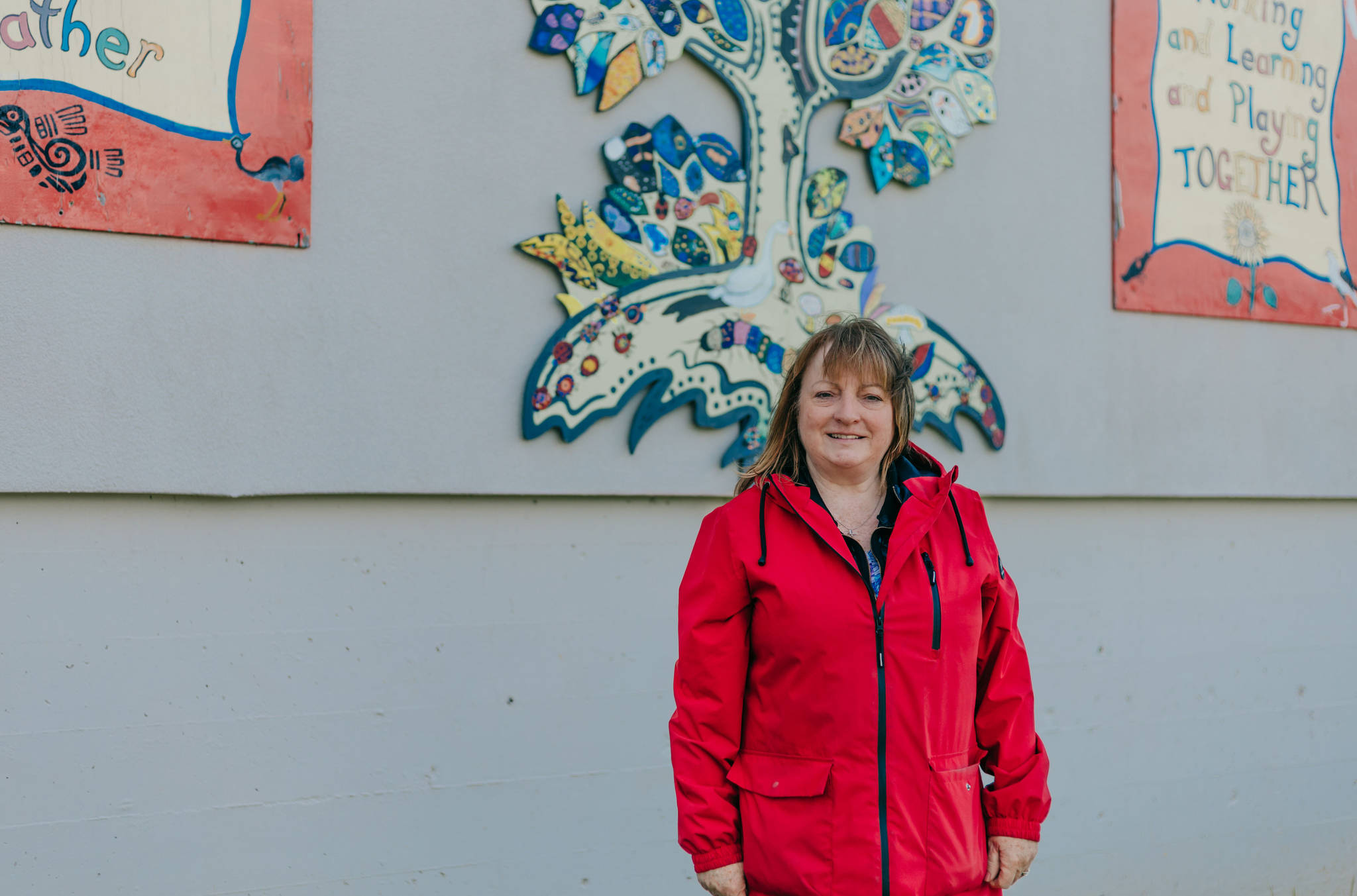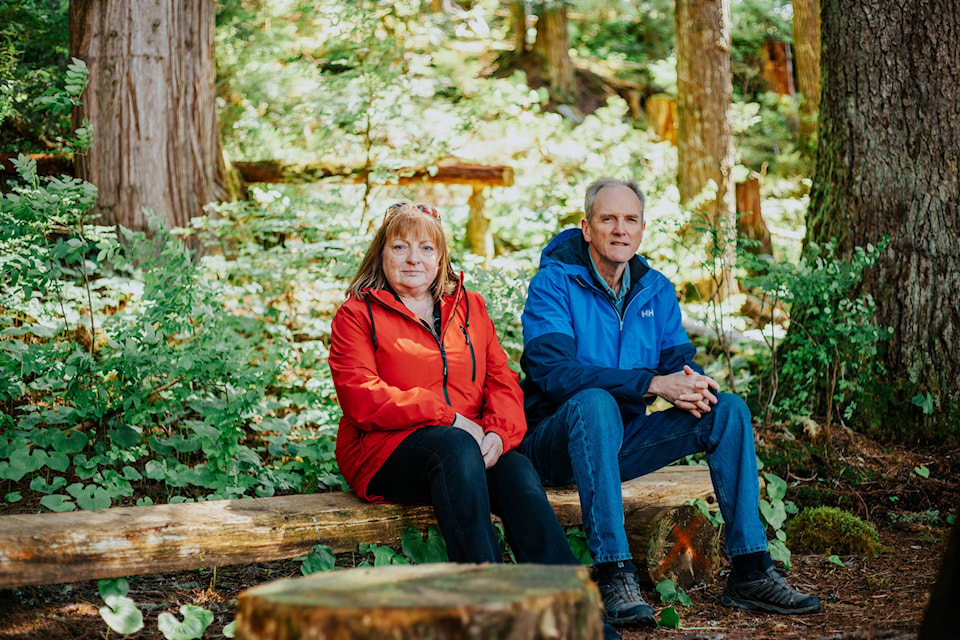- Story by Anna Lamb-Yorski from Living Here
“We appreciate that there has to be industry, and we happen to live in a valley that is encouraging more. We just want to make sure that somebody is watching. Somebody has to be doing it, and it happens to be us.”
These are words from Pam Vollrath, a retired school teacher, who has called Kitimat home since 1979. The ‘us’ she is referring to is the Kitimat Terrace Clean Air Coalition (KTCAC), a society that formed in 2016 in response to health concerns involving air quality.
“We were very worried about the cumulative effects of all of the industry that is here and more to come,” Pam says. “There are statistics showing that people with respiratory illnesses are definitely above average in this town.”
The town Pam calls home got its name in 1951, when Alcan Aluminum — now called Rio Tinto Alcan — built it. The company has been the main employer since.
“It is an economy that this community relies on,” explains Steve Stannus, a retired project technician who has lived in Kitimat since 1998 and has also been involved in KTCAC since it formed five years ago.
Over the past eight years, people like Steve and Pam have been working with government and industry to address concerns around sulphur dioxide in Kitimat air and to come up with a solution that works for everyone. Although it hasn’t always been easy.
“There was some negativity of our group speaking up, and people were afraid we would push [industry] out,” Steve says. “That was never our intent. We just want to make sure that the government does the right thing when issuing a permit. To make sure they listen to the people that are concerned.”
Taking care of the air
“It started when Rio Tinto was proposing to do a modernization to the smelter plant,” Steve Stannus explains. “They said that the new plant would have a 50 per cent reduction in their emissions compared to the old plant. Having said that, they missed out a criteria in their claims: SO2 [sulphur dioxide].”
For every 1,000 people who live in Kitimat — just over 8,000 people live there — 12.4 have asthma and 21.4 have chronic obstructive pulmonary disease (COPD). The former is 104 per cent higher than the provincial average, the latter 183 per cent higher. And airborne sulphur dioxide — a gas released as a by-product of metal smelting — is a well-known cause of respiratory problems and can worsen diseases such as asthma or COPD.
In 2013, when Rio Tinto Alcan announced they’d be making more aluminum and therefore more jobs, many locals welcomed the modernization project.
However others, like Pam and Steve, felt that the proposed 56 per cent increase of 42 tonnes a day of sulphur dioxide could have impacts on the air they breathed.
“It was kind of a shock,” Pam Vollrath remembers.
“There were plans to install these sulphur dioxide scrubbers in the plant originally. But the government allowed them to not install them. We didn’t have much time to respond to this decision as a community.”
Yet the community did respond. The KTCAC was formed and in 2019, sulphur dioxide emission concerns were taken seriously. A mediated settlement in court required there to be a more robust air quality monitoring network, and to the delight of Pam, Steve and other KTCAC members, an independent group called the Kitimat Airshed Group was formalized and continues to be consulted with on a regular basis.
“I think in the past, they tended to dismiss concerns,” Pam says. “But I would like to think that because of our perseverance and commenting on emissions, they know we are not going away. I think they started to listen more.”
READ MORE: Major changes ahead for Kitimat’s airshed
Transparency for transparent skies
Today, three air monitoring stations surround Kitimat. They monitor levels of particulate matter and chemicals like sulphur dioxide and alert residents if and when sulphur dioxide concentrations exceed 36 ppb. Locals who have trouble breathing feel safer going outside when they know the sulphur dioxide levels are low.
At the end of the day, for both Pam and Steve, it’s about enjoying where they live and keeping it that way. They have spent their lives working and living in Kitimat. They love it, and have no plans to leave, as long as the air doesn’t get worse.
“From my perspective I think we’ve made some successes,” Steve Stannus says. “Industry and government are listening to people who are concerned in Kitimat. That’s a positive step forward for the community.”
Pam Vollrath agrees.
“I am happy to see that things have changed for the better, and we’ve had an influence. I feel very blessed to be living where I am. I want it to stay the same or better,” Vollrath said.
Anna Lamb-Yorski writes for Living Here magazine. Read more local stories at www.livinghere.ca
jacob.lubberts@northernsentinel.com
